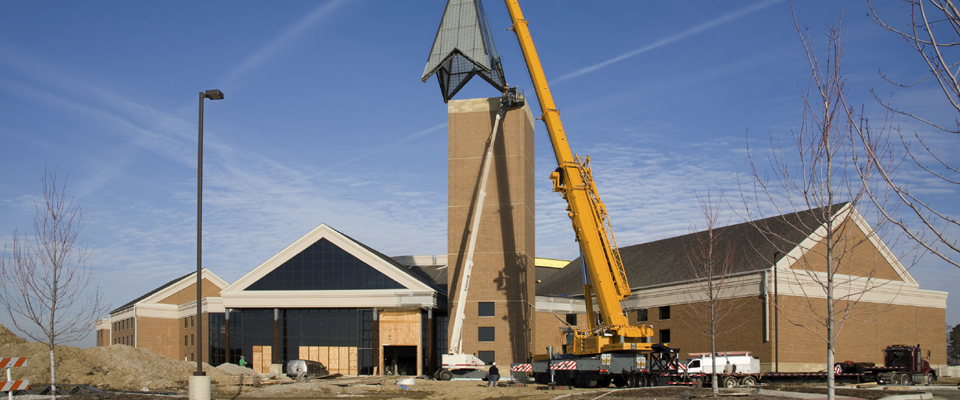When shopping for a church loan, it’s tempting to choose a lender based solely on the interest rate they can offer. However, the loan with the best rate may not always prove to be the best choice for a church’s financial future.
The foundational question to ask as you shop isn’t what the rate is. It’s who will carry the risk—your church or your lender? As you’ll see in this post, basing your choice solely on rate puts the risk on your shoulders. We will show you a better approach. But first, it is important to understand three key interest rate variables.
Rate reflects risk.
Lenders are often able to offer a lower interest rate when they assume less risk. Shortening the loan term is one way to reduce their risk. Because the lender expects to get back the full amount loaned, plus interest, within a brief time frame, a shorter loan term allows for a lower interest rate. For example, a 5-year loan term gives a church just 5 years to pay off the entire loan amount. These kinds of short-term loans are called balloon notes because they are set up so that the remaining balance is due in one final payment at the end of the term—the balloon payment. With this kind of loan, the church assumes a higher risk that leaves them with three choices: pay the balance off at the end of the term, refinance with a new loan agreement, or face loan default.
Fixed rates can be deceiving.
As a church, you will have a commercial loan, which differs significantly from a residential loan. With residential loans, many people shy away from the phrase “adjustable rate.” In commercial loans, “adjustable” is not necessarily a bad word. Lending institutions and banks often use the term “fixed” to ease the mind of their borrowers. In reality, the long-term, fixed-rate mortgage product that is often seen in residential lending does not exist in the commercial mortgage world. Instead, lenders create a fixed-rate mortgage by shortening the term to 3 or 5 years. Unless you can pay the entire balance of the loan within that short term, you will receive a new “fixed” rate for the term of your next loan. In other words, the lender is still adjusting the rate every 3 to 5 years when the borrower refinances.
This arrangement most often benefits the lender rather than the church because there is no cap on how much interest rates can increase; the church must simply go with the rates available in the market. With a longer term like 20 years, the interest rate may adjust several times, but your contract will include a rate cap so you will know up front how high the rate is allowed to go. A longer term also eliminates the associated fees and closing costs that come with refinancing.
Some lenders offer the best of both worlds: the opportunity to keep the same rate for a set period of time (usually 3, 5, or 7 years), with a long loan term (often 20 years). After the specified time period, the rate automatically adjusts, never going higher than what was agreed upon at signing. Through this arrangement, churches get the same amount of time to enjoy a “fixed” rate as they would with a five-year balloon note, but with the added stability of long-term financing.
Chase the right number: total interest paid over time.
If you repeatedly refinance short-term balloon notes, not only do you have to pay new (often higher) rates, but your amortization or payment schedule also starts over with each refinance. That means you’ll be paying front-loaded interest again and again. This increases the total interest you pay over time to borrow the same money. Although a longer loan term may include rate adjustments over the years, there will be a cap on the rate and the loan will not be re-amortized. That means less total interest paid.
Weigh all the risks.
When comparing loans, it can be tempting to focus only on interest rates. Keep in mind there is a direct connection between rate and risk. As you look at the big picture, consider how much risk you’re willing to take. With its comparatively low interest rate, a short-term balloon note may seem like the best solution for the growth of your ministry. Yet with this option, you risk several things:
- That you will be able to pay off the loan at the term’s end.
- If you must refinance:
- That the lender will be willing to refinance your loan.
- That interest rates will be the same or lower.
- That your church will be able to qualify for and pay the closing costs of refinancing.
Exclusively chasing low interest rates could not only cost your church more in the long run, but also put your church in a riskier financial position. A much better approach for churches is to weigh the interest rate against the loan term. Opt for a term that will provide enough time for your church to pay off the loan balance without needing to refinance repeatedly.
For a more detailed overview of how to compare church loans, check out How to Shop for a Church Loan.
As you search for the loan solution that is best for your ministry, we invite you to contact us to discuss your options. Call 866.621.1787 to set up a time to speak with a loan consultant.



